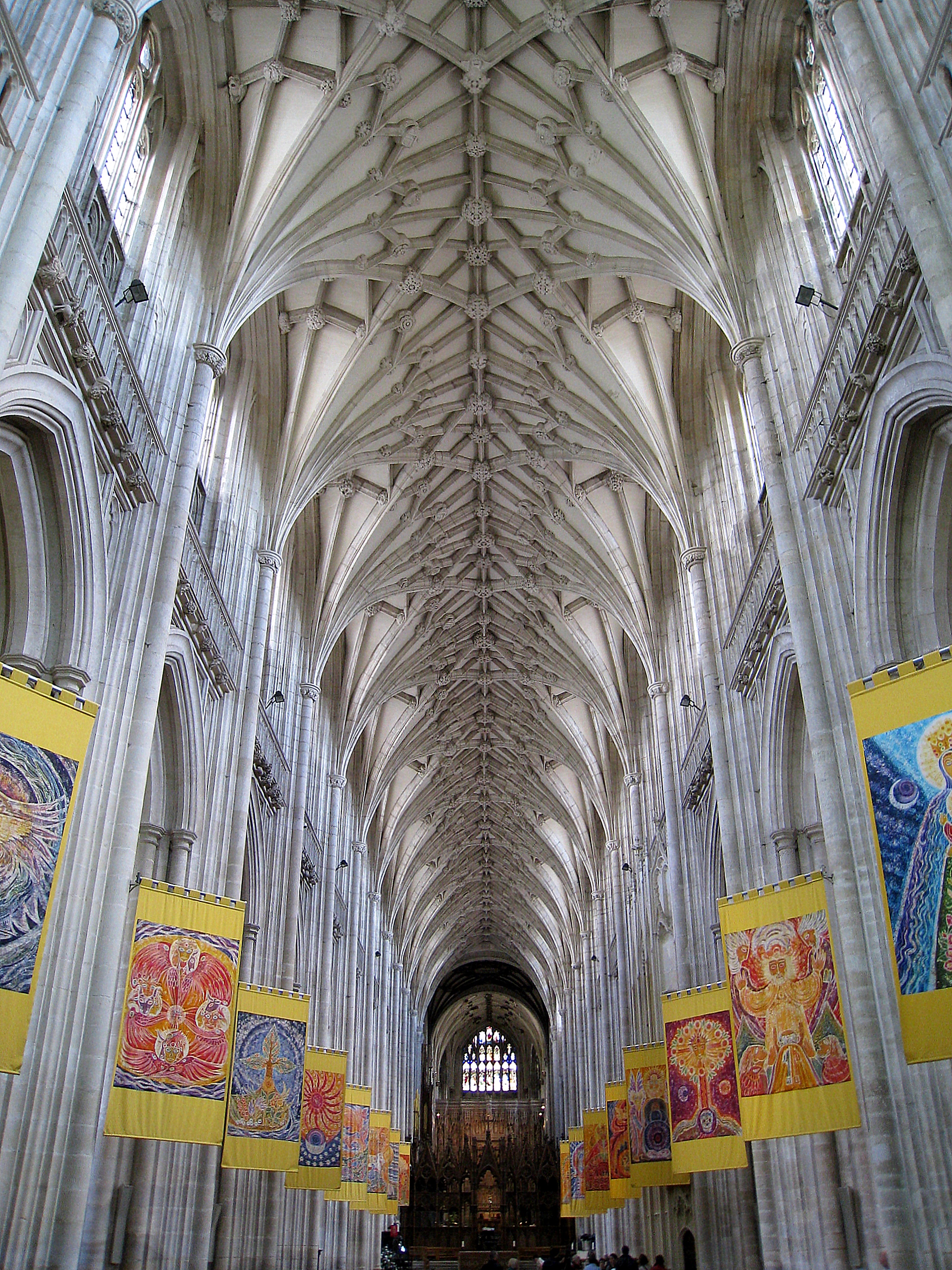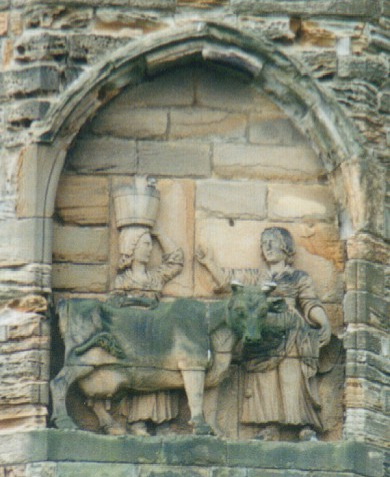|
Thetis Blacker
Ann Thetis Blacker (13 December 1927 – 18 December 2006) was an English painter and singer. She was noted for her richly coloured pictures, especially using the batik wax-resist fabric dyeing process. Blacker was born in Holmbury St Mary, Surrey, England. She was the daughter of Carlos Paton Blacker, a psychiatrist, and granddaughter of Carlos Blacker, a friend of Oscar Wilde. Blacker intended to be a singer and studied with the German mezzo-soprano singer Elena Gerhardt in London. She appeared in the chorus at Glyndebourne opera in the 1950s and sang the role of "Mother Goose" in ''The Rake's Progress'' by Igor Stravinsky. When her singing career was cut short by vocal issues in the mid-1950s, Blacker turned her focus to painting. She studied at the Chelsea School of Art in London and was taught by the wife of the artist Leonard Campbell Taylor, Brenda Moore. In 1970, Blacker became a Churchill Fellow and visited India, Indonesia, Iran, Malaysia, Singapore, and Thailand. She w ... [...More Info...] [...Related Items...] OR: [Wikipedia] [Google] [Baidu] |
Holmbury St Mary
Holmbury St Mary is a village in Surrey, England centered on shallow upper slopes of the Greensand Ridge. Its developed area is a nucleated village, southwest of Dorking and southeast of Guildford. Most of the village is in the borough of Guildford, within Shere civil parish. Much of the east side of the village street is in the district of Mole Valley, within Abinger civil parish. It contains a building which formerly doubled as a meeting venue for Beatrice Webb, a Fabian social reformer who co-founded the London School of Economics; it is now the location of the Mullard Space Science Laboratory. There is a YHA youth hostel. Geography Holmbury St Mary is located inside the Hurtwood Forest, which is considered the largest area of common land in Surrey; it takes up part of the Greensand Ridge which in turn contributes to the Surrey Hills AONB. Nearby to the south is Holmbury Hill, which at 857 feet (261 m) is the fourth highest point in Surrey. The summit of Holmbury H ... [...More Info...] [...Related Items...] OR: [Wikipedia] [Google] [Baidu] |
St George's Chapel, Windsor
St George's Chapel, formally titled The King's Free Chapel of the College of St George, Windsor Castle, at Windsor Castle in England is a castle chapel built in the late-medieval Perpendicular Gothic style. It is a Royal Peculiar (a church under the direct jurisdiction of the monarch), and the Chapel of the Order of the Garter. St George's Chapel was founded in the 14th century by King Edward III and extensively enlarged in the late 15th century. It is located in the Lower Ward of the castle. The castle has belonged to the monarchy for almost 1,000 years. The chapel has been the scene of many royal services, weddings and burials – in the 19th century, St George's Chapel and the nearby Frogmore Gardens superseded Westminster Abbey as the chosen burial place for the British royal family. The running of the chapel is the responsibility of the dean and Canons of Windsor who make up the College of Saint George. They are assisted by a clerk, verger and other staff. The Societ ... [...More Info...] [...Related Items...] OR: [Wikipedia] [Google] [Baidu] |
Alumni Of The University Of The Arts London
Alumni (: alumnus () or alumna ()) are former students or graduates of a school, college, or university. The feminine plural alumnae is sometimes used for groups of women, and alums (: alum) or alumns (: alumn) as gender-neutral alternatives. The word comes from Latin, meaning nurslings, pupils or foster children, derived from "to nourish". The term is not synonymous with "graduates": people can be alumni without graduating, e.g. Burt Reynolds was an alumnus of Florida State University but did not graduate. The term is sometimes used to refer to former employees, former members of an organization, former contributors, or former inmates. Etymology The Latin noun means "foster son" or "pupil". It is derived from the Latin verb "to nourish". Separate, but from the same root, is the adjective "nourishing", found in the phrase ''alma mater'', a title for a person's home university. Usage in Roman law In Latin, is a legal term (Roman law) to describe a child placed in fosterag ... [...More Info...] [...Related Items...] OR: [Wikipedia] [Google] [Baidu] |
2006 Deaths
This is a list of lists of deaths of notable people, organized by year. New deaths articles are added to their respective month (e.g., Deaths in ) and then linked below. 2025 2024 2023 2022 2021 2020 2019 2018 2017 2016 2015 2014 2013 2012 2011 2010 2009 2008 2007 2006 2005 2004 2003 2002 2001 2000 1999 1998 1997 1996 1995 1994 1993 1992 1991 1990 1989 1988 1987 1986 Earlier years ''Deaths in years earlier than this can usually be found in the main articles of the years.'' See also * Lists of deaths by day * Deaths by year (category) {{DEFAULTSORT:deaths by year ... [...More Info...] [...Related Items...] OR: [Wikipedia] [Google] [Baidu] |
1927 Births
Events January * January 1 – The British Broadcasting ''Company'' becomes the BBC, British Broadcasting ''Corporation'', when its Royal Charter of incorporation takes effect. John Reith, 1st Baron Reith, John Reith becomes the first Director-General. * January 7 ** The first transatlantic telephone call is made ''via radio'' from New York City, United States, to London, United Kingdom. ** The Harlem Globetrotters exhibition basketball team play their first ever road game in Hinckley, Illinois. * January 9 – The Laurier Palace Theatre fire at a movie theatre in Montreal, Quebec, Canada, kills 78 children. * January 10 – Fritz Lang's futuristic film ''Metropolis (1927 film), Metropolis'' is released in Germany. * January 11 – Louis B. Mayer, head of film studio Metro-Goldwyn-Mayer (MGM), announces the creation of the Academy of Motion Picture Arts and Sciences, at a banquet in Los Angeles, California. * January 24 – U.S. Marines United States occ ... [...More Info...] [...Related Items...] OR: [Wikipedia] [Google] [Baidu] |
Durham Cathedral
Durham Cathedral, formally the , is a Church of England cathedral in the city of Durham, England. The cathedral is the seat of the bishop of Durham and is the Mother Church#Cathedral, mother church of the diocese of Durham. It also contains the shrines of the Anglo-Saxons, Anglo-Saxon saints Cuthbert and Bede. There are daily Church of England services at the cathedral, and it received 727,367 visitors in 2019. It is a grade I listed building and forms part of the Durham Castle and Cathedral World Heritage Site. The cathedral is the successor to the Anglo-Saxon Lindisfarne Priory, which was established but abandoned in 875 in the face of Viking Age, Viking raids. The monks settled at Chester-le-Street from 882 until 995, when they moved to Durham. The cathedral remained a monastery until it was Dissolution of the monasteries, dissolved in 1541, since when it has been governed by a Dean of Durham, dean and Chapter (religion), chapter. The cathedral precinct formed part of Durham ... [...More Info...] [...Related Items...] OR: [Wikipedia] [Google] [Baidu] |
Oswald Of Northumbria
Oswald (; c 604 – 5 August 641/642Bede gives the year of Oswald's death as 642. However there is some question of whether what Bede considered 642 is the same as what would now be considered 642. R. L. Poole (''Studies in Chronology and History'', 1934) put forward the theory that Bede's years began in September, and if this theory is followed (as it was, for instance, by Frank Stenton in his notable history ''Anglo-Saxon England'', first published in 1943), then the date of the Battle of Heavenfield (and the beginning of Oswald's reign) is pushed back from 634 to 633. Thus, if Oswald subsequently reigned for eight years, he would have actually been killed in 641. Poole's theory has been contested, however, and arguments have been made that Bede began his year on 25 December or 1 January, in which case Bede's years would be accurate as he gives them.) was List of monarchs of Northumbria, King of Northumbria from 634 until his death, and is venerated as a saint, of whom ther ... [...More Info...] [...Related Items...] OR: [Wikipedia] [Google] [Baidu] |
St Cuthbert
Cuthbert of Lindisfarne () ( – 20 March 687) was a saint of the early Northumbrian church in the Hiberno-Scottish mission, Celtic tradition. He was a monk, bishop and hermit, associated with the monastery, monasteries of Melrose Abbey#History, Melrose and Lindisfarne in the Kingdom of Northumbria, today in northern England and southern Scotland. Both during his life and after his death, he became a popular medieval saint of Northern England, with a cult (religious practice), cult centred on his tomb at Durham Cathedral. Cuthbert is regarded as the patron saint of Northumbria. His feast days are 20 March (Catholic Church, Church of England, Eastern Orthodox Church, Episcopal Church (United States), Episcopal Church) and 4 September (Church in Wales, Catholic Church). Cuthbert grew up in or around Lauderdale, near Melrose Abbey, Old Melrose Abbey, a daughter-house of Lindisfarne, today in Scotland. He decided to become a monk after seeing a vision on the night in 651 that Aida ... [...More Info...] [...Related Items...] OR: [Wikipedia] [Google] [Baidu] |
Phoenix (mythology)
The phoenix is a Legendary creature, legendary immortal bird that cyclically regenerates or is otherwise born again. Originating in Greek mythology, it has analogs in many cultures, such as Egyptian mythology, Egyptian and Persian mythology. Associated with the sun, a phoenix obtains new life by rising from the ashes of its predecessor. Some legends say it dies in a show of flames and combustion, while others say that it simply dies and decomposes before being born again. In the ''Motif-Index of Folk-Literature'', a tool used by folklore studies, folklorists, the phoenix is classified as motif B32.Thompson. (2001: 581). The origin of the phoenix has been attributed to Ancient Egypt by Herodotus and later 19th-century scholars, but other scholars think the Egyptian texts may have been influenced by classical folklore. Over time, the phoenix motif spread and gained a variety of new associations; Herodotus, Lucan, Pliny the Elder, Pope Clement I, Lactantius, Ovid, and Isidore of Sev ... [...More Info...] [...Related Items...] OR: [Wikipedia] [Google] [Baidu] |







